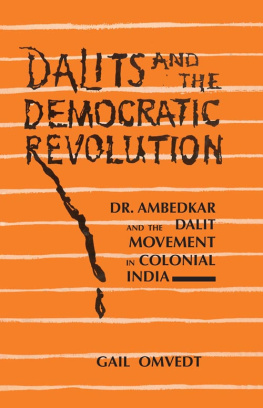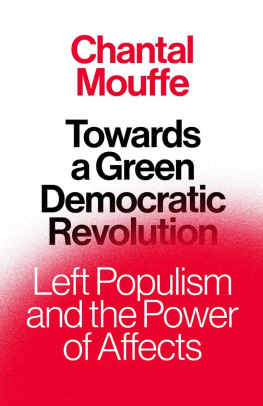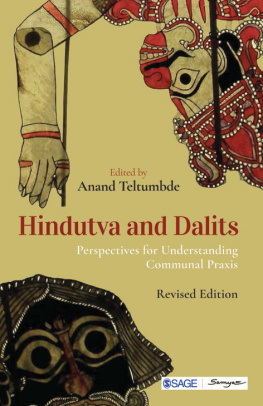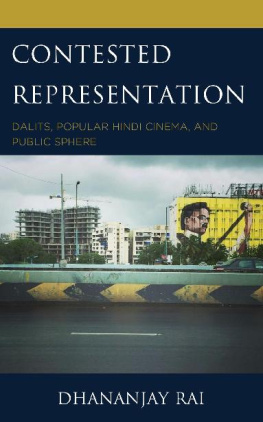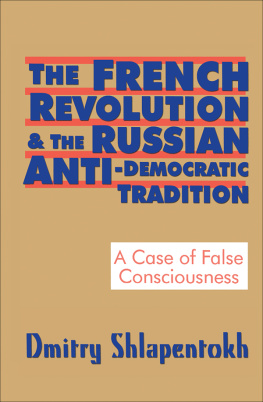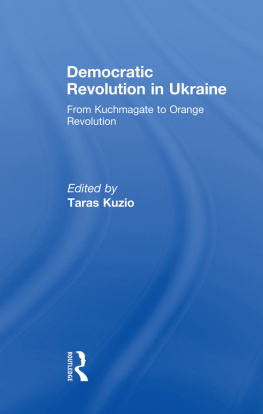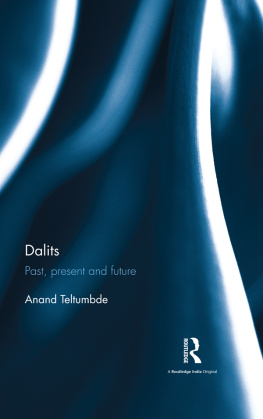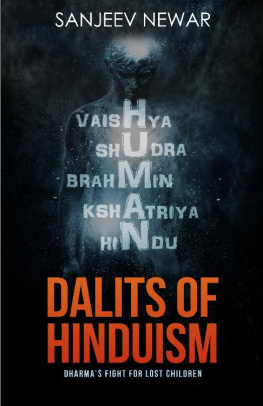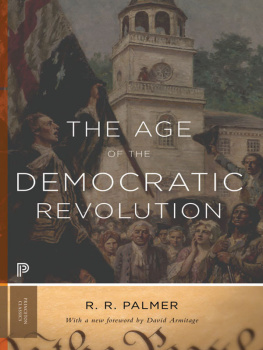Omvedt - Dalits and the Democratic Revolution
Here you can read online Omvedt - Dalits and the Democratic Revolution full text of the book (entire story) in english for free. Download pdf and epub, get meaning, cover and reviews about this ebook. year: 2013, publisher: SAGE Publications, genre: Politics. Description of the work, (preface) as well as reviews are available. Best literature library LitArk.com created for fans of good reading and offers a wide selection of genres:
Romance novel
Science fiction
Adventure
Detective
Science
History
Home and family
Prose
Art
Politics
Computer
Non-fiction
Religion
Business
Children
Humor
Choose a favorite category and find really read worthwhile books. Enjoy immersion in the world of imagination, feel the emotions of the characters or learn something new for yourself, make an fascinating discovery.
Dalits and the Democratic Revolution: summary, description and annotation
We offer to read an annotation, description, summary or preface (depends on what the author of the book "Dalits and the Democratic Revolution" wrote himself). If you haven't found the necessary information about the book — write in the comments, we will try to find it.
Omvedt: author's other books
Who wrote Dalits and the Democratic Revolution? Find out the surname, the name of the author of the book and a list of all author's works by series.
Dalits and the Democratic Revolution — read online for free the complete book (whole text) full work
Below is the text of the book, divided by pages. System saving the place of the last page read, allows you to conveniently read the book "Dalits and the Democratic Revolution" online for free, without having to search again every time where you left off. Put a bookmark, and you can go to the page where you finished reading at any time.
Font size:
Interval:
Bookmark:
Dalits
and the
DEMOCRATIC
REVOLUTION
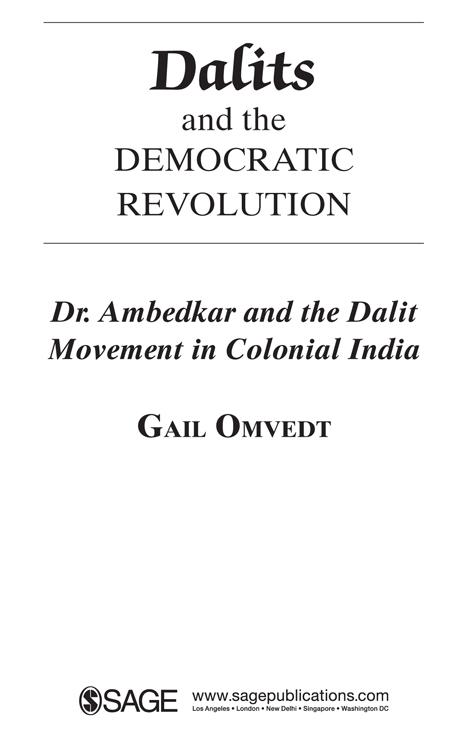
Copy Gail Omvedt, 2014
All rights reserved. No part of this book may be reproduced or utilized in any form or by any means, electronic or mechanical, including photocopying, recording or by any information storage or retrieval system without permission in writing from the publisher.
First published in 2014 by
| SAGE Publications India Pvt Ltd B1/I-1 Mohan Cooperative Industrial Area Mathura Road, New Delhi 110 044, India www.sagepub.in |
SAGE Publications Inc 2455 Teller Road Thousand Oaks, California 91320 |
SAGE Publications Ltd 1 Olivers Yard, 55 City Road London EC1Y 1SP |
SAGE Publications Asia-Pacific Pte Ltd 3 Church Street #10-04 Samsung Hub Singapore 049483 |
Published by Tejeshwar Singh for SAGE Publications India Pvt Ltd, phototypeset by Patgewell Photosetters, Pondicherry, and printed at Chaman Enterprises, New Delhi.
Eleventh Printing 2011
Library of Congress Cataloging-in-Publication Data
Omvedt, Gail
Dalits and the democratic revolution: Dr. Ambedkar and the Dalit movement in colonial India/Gail Omvedt.
p. cm.
Includes index.
1. UntouchablesIndiaPolitical activityHistory20th century.
2. Ambedkar, Bhimrao Ramji, 1892-. I. Title.
DS422.C3053 954.03'5'08694dc20 1994 93-11778
ISBN: 978-81-321-1983-8
Now, Now
Turning their backs to the sun, they journeyed through centuries.
Now, now, we must refuse to be pilgrims of darkness.
That one, our father, carrying, carrying the darkness is now bent;
Now, now we must lift that burden from his back.
Our blood was spilled for this glorious city
And what we got was the right to eat stones.
Now, now, we must explode that building which kisses the sky!
After a thousand years we were blessed with a sunflower giving fakir;
Now, now we must, like sunflowers, turn our faces to the sun.
Namdev Dhasal
in Mulk Raj Anand and Eleanor Zelliot (eds), An Anthology of Dalit Literature (New Delhi: Gyan Publishing House, 1992), p. 53.
Namdev Dhasals poem expresses all the anguish and aspiration of being a Dalit in India today: the sense of having been the exploited and oppressed builders of the great Indian civilization and of emerging out of centuries of darkness to claim their heritage, now, now. Not unusually, it centres around B.R. Ambedkar, the legendary leader of the Dalit movement and one of the greatest of modern Indians; it proclaims a life-giving hope, a new sun; and it threatens to explode that building if this is not satisfied.
Such images of oppression, of darkness and light, of revolt, of smashing structures of exploitation pervade the poetry of the anti-caste movement. The image of the sun is frequent. Shripal Sabnis, a non-Brahman poet, writes of caste that
The sun of self-respect has burst into flame,
let it burn up caste .
The title, No Room for the New Sun , used for a recent English translation of Dalit poems, as well as many of the poems published, express similar themes.
This study, an outgrowth of an ICSSR project on History of Dalit Movements in Maharashtra, Andhra and Karnataka, 18501975, focuses on the Dalit movement in the colonial period. It defines it as
The Dalit and non-Brahman anti-caste movements can be classified as anti-systemic movements in the framework of such Marxist theorists as Immanuel Wallerstein, or, in the language of functionalist sociological theory, as value-oriented movements as opposed to norm-oriented movements.
In contrast, the anti-caste movement aimed at felling the tree. In this it was akin to radical Marxism, especially the Dalit-based Naxalite movement in Bihar in the 1970s, described by a sympathetic journalist in terms of resurrection and revolution:
This man has risen from the grave: he seems to have gone berserk and is frenzeidly chopping the branches of feudalism. His desire is to see the 2500-year old tree felled here and now. So far he has only been humiliated, whipped and slain, denied the status of a man; his wife treated as a prostitute. Then somebody brought him news of Naxalbari and things began to change. The Harijan died, the Koeri was burnt; the new man who rose from the flames felt that he was neither a Harijan nor a Koeri but a man.
A revolutionary message, a will to act against exploitation, a rise from oppression, from death to life, from darkness to light: the process has been going on in sporadic ways all over India since the nineteenth century. While the Naxalite movement has done this for the low castes of Bihar in recent years, before Naxalism, before even Marxism entered India, a revolutionary anti-caste movement had begun. In ways that had many parallels with militant Marxism it described a society based on exploitation; and in ways similar to that described by the journalist Arun Sinha, it brought a revolutionary democratic message. Another journalist, a major figure of the Maharashtrian anti-caste Satyashodhak Samaj (still uninfluenced by Marxism), writes
India is a strange place which collects all sorts of social groups, divided by different religions, thoughts, practices and understandings. But broadly speaking, they can be categorized into twothe majority low castes who have been devoid of humanity for centuries and a handful who take their pleasure, call themselves superior and live at the cost of the majority. Ones welfare is anothers misery; that is their connection.
In this context,
Such a revolutionary wave reached the lowest classes so that a power of thought was created among them . Those who kindled among
The main figures of this larger anti-caste movement, Jotiba Phule, Babasaheb Ambedkar and E.V. Ramasami Periyar, with many others throughout India (Narayanswami Guru in Kerala, Acchuta nand in U.P., Mangoo Ram in Punjab) all attacked the system of exploitation at all levels, culturally, economically and politically.
They challenged the Hindu-nationalism which was emerging as a consequence of the elite organizing from the nineteenth century onward to define Indian society, and the majority of Indian people, as essentially Hindu: not only did they criticize distortions and excrescences; they attacked Hinduism itself by arguing that it was in essence Brahmanical, caste-bound and irrational. They asserted that Hinduism had not been the religion and culture of the majority but rather was an imposed religion; and that escaping exploitation today required the low castes to reject this imposition, to define themselves as non-Hindu and take a new religious identity. Phule tried to formulate a new, theistic religion; Periyar promoted atheism; Ambedkar turned to Buddhism; others in the Tamil Nadu non-Brahman movement tried to claim Saivism as an independent religion; Narayanswami Guru formulated one religion, one caste, one god while his more radical follower Ayyapan proclaimed no religion, no caste, and no God for mankind. Whatever the specificities, the rejection of Hinduism remained a feature differentiating the anti-caste radicals from the reformers.
They were also economic radicals, though from different points of view, identifying themselves not simply with low castes but with peasants and workers as such. Phule strongly attacked the exploitation of peasants by the bureaucracy; Ambedkar and Periyar both supported and helped organize movements of peasants against landlords and workers against capitalists; and Ambedkar unambiguously identified himself as a socialist.
Next pageFont size:
Interval:
Bookmark:
Similar books «Dalits and the Democratic Revolution»
Look at similar books to Dalits and the Democratic Revolution. We have selected literature similar in name and meaning in the hope of providing readers with more options to find new, interesting, not yet read works.
Discussion, reviews of the book Dalits and the Democratic Revolution and just readers' own opinions. Leave your comments, write what you think about the work, its meaning or the main characters. Specify what exactly you liked and what you didn't like, and why you think so.

